Visit Kyichu Lhakhang To Immerse In Spiritual Oasis In the Heart Of Bhutan In 2025
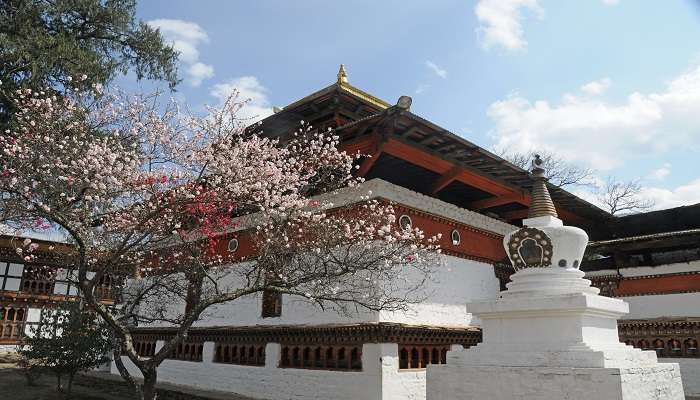
Kyichu Lhakhang, a gem in Bhutan’s Paro Valley, is a testament to the country’s deep-rooted Buddhist heritage. It is considered one of the oldest monasteries in the Himalayan area and has cultural significance for the Bhutanese people. The history of this place is interwoven into the very fabric of the nation’s existence, thus making it an obligatory destination for tourists interested in culture. For centuries, many well-known Buddhist saints and gurus have come here, whose spiritual glow and contribution gave rise to its architectural grandeur. A peaceful environment and devout prayers from visitors make this Buddhist temple in Bhutan a perfect place for meditation.
History Of Kyichu Lhakhang
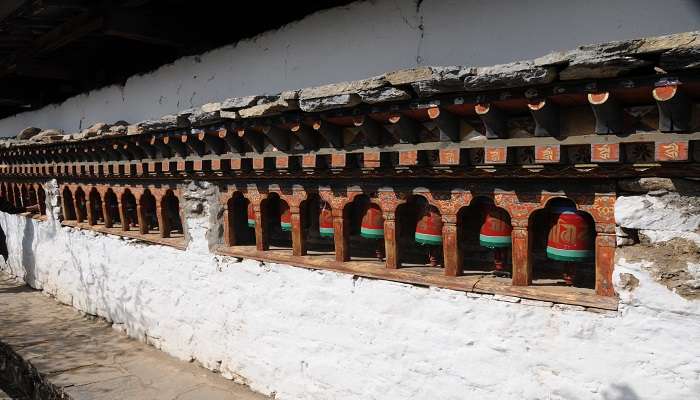
It is believed that it was constructed in the 7th century and was instrumental in the spread of Buddhism. The temple’s birth is brilliantly described in myth. As part of Emperor Songtsen Gampo’s attempts to overcome a demoness standing on its way to propagate Buddhism, he specially built the temple on her left leg, symbolising him having pinned her down. According to legend, Guru Padmasambhava (also known as the Second Buddha) visited Kyichu Lhakhang in the 8th century, which made it even more hallowed and mysterious.
This has added to its allure since he concealed several sacred objects within its walls, fueling speculation among worshippers and tourists alike. This captivating journey traces architectural changes experienced by the historical monastery. It began with a simple building, but it has grown larger and increasingly intricate over time. The meticulous detailing involving holy pictures and religious artefacts made this a great spiritual centre. Every corner of this temple exhibits a seamless blend of modern piety and age-long traditions.
Also Read: Places To Visit In Paro
Who Built Kyichu Lhakhang?
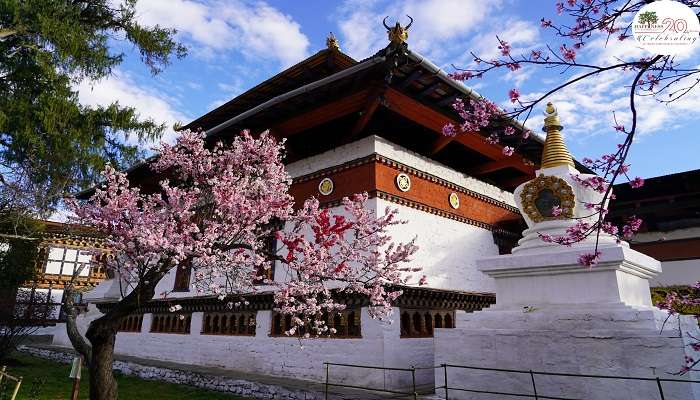
Emperor Songtsen Gampo constructed Kyichu Lhakhang during his reign, which helped in major political and religious transformations in Tibet, where Buddhism was taking its roots. Consequently, he built 108 temples throughout the region as part of his ambitious plan to promote Buddhist supremacy.
Although many people have forgotten about the person who constructed this temple, they still admire it. Kyichu Lhakhang is, therefore, more than a mere structure; it is a living expression of faith, history, and Bhutan’s indomitable spirit. Its origin and development make it an essential part of Bhutan’s cultural heritage.
Main Statue Of Kyichu Lhakhang
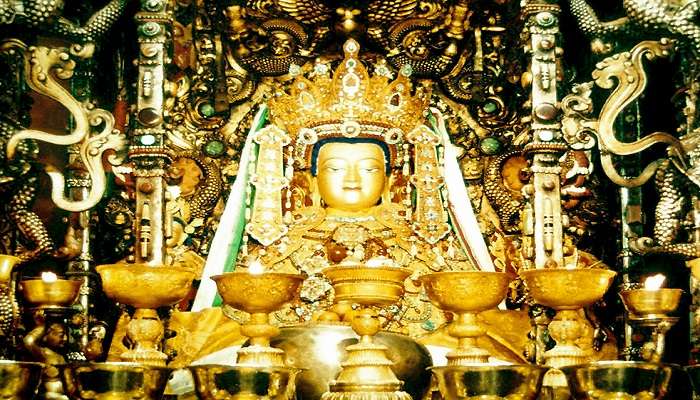
Jowo Jamba statue is an outstanding representation of Buddha Shakyamuni. It dates back to the 7th century BCE and is considered one of the holiest sculptures. Serene countenance has been meticulously carved on the Buddha’s face, making this portrait look highly intricate and wise.
The Jowo Jamba statue is aesthetically appealing and has religious importance. The figure is known to be miraculous, with devotees believing it can grant their prayers and bless them in various ways. Thousands of people from all over the world come to Kyichu Lhakhang every year to worship.
Related Post: Valleys In Bhutan
Importance Of Kyichu Lhakhang
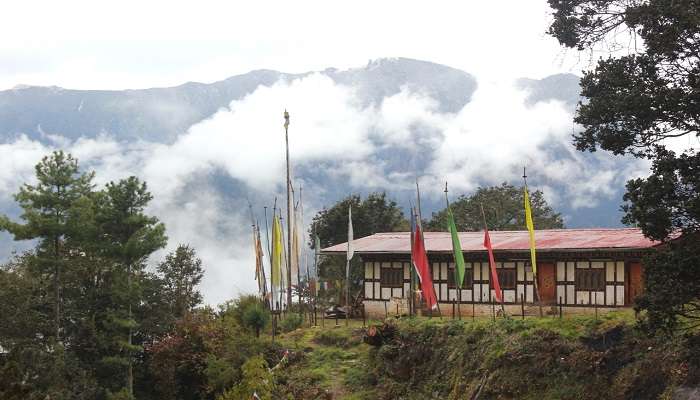
This site is more than just a historical monument; as a spiritual and cultural epicentre, Kyichu Lhakhang defines Bhutan. It is the central place from which Buddhism spread to this region. This temple served as an institute for learning and spiritual practice for hundreds of years.
Many famous Buddhists have come to Kyichu Lhakhang to teach their disciples over the centuries. Furthermore, Kyichu Lhakhang is a unifying force in Bhutan society. It gets crowded with visitors from all walks of life praying there, seeking blessings, or feeling deeply connected with their religion and ancestry. The annual festivals that take place at this site bring together communities in great joy and renewed spirituality.
Things To Do In Kyichu Lhakhang
Kyichu Lhakhang is one of the kingdom’s holiest places, inviting pilgrims and tourists to immerse themselves in an atmosphere of serenity and devotion. The serene temple grounds provide a perfect backdrop for meditation and reflection. Nearby, the lush landscapes invite strolls, allowing travellers to soak in the region’s natural beauty.
1. Explore The Temple Campus
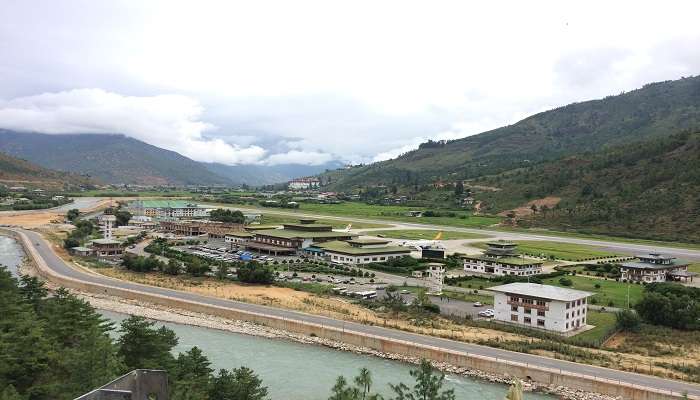
Inside the Kyichu Lhakhang complex, you feel like you’re travelling back in time. The central temple, an awe-inspiring architectural marvel, possesses an ever-present air of timeless grace. Its aged stone walls and intricately designed wood beams provide an insight into past centuries.
Inside, there is a world filled with spiritual amazement, as vivid murals illustrating Buddhist deities and stories adorn its walls. Besides the main temple area, extensive gardens are present on site, which serve as a peaceful sanctuary. When traversing this compound, you will find yourself amidst nature intertwined with spirituality, symbolising Bhutan’s deep-rooted respect for the environment.
Related Post: Bhutan Hill Stations
2. Spin The Prayer Wheels
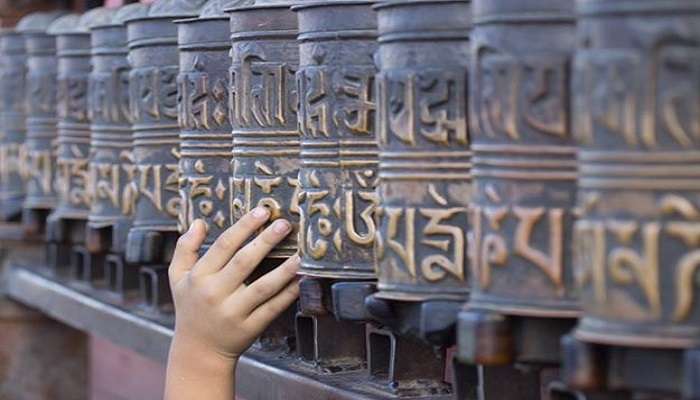
At Kyichu Lhakhang, people perform their religious activities by spinning prayer wheels. Prayer wheels are cylindrical structures covered with countless mantras and holy verses found everywhere around Buddhist sites. They are believed to hold immense holy power that vanquishes negative karma while accumulating merit whenever they are rotated.
As multiple prayer wheels spin together, they create a stunning audio effect that forms the rhythmic background, blending with the calmness of the temple compound. Spining the prayer wheel is not just a physical act; it is symbolic of faith and hope. This practice is known to bring blessings, insightfulness, and inner peace. Spinning prayer wheels promotes commonality among wider Buddhist society.
3. Attend A Religious Ceremony
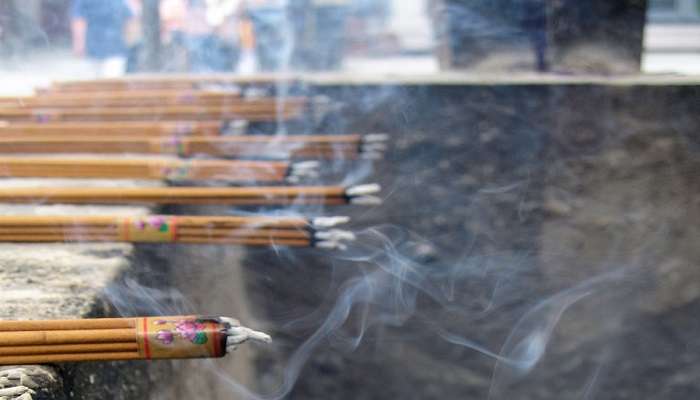
Kyichu Lhakhang is the place to go for religious ceremonies. These include both grand festivals and everyday rituals that are attended with deep respect and devotion. Traditional instruments like drums, cymbals and trumpets produce rhythmic sounds all around. As priests sing in perfect harmony, these prayer songs can take your soul to heaven.
The collective devotion of participants generates such a powerful spiritual force that it brings many people to tears. Whether you’re a devout Buddhist or a keen observer, participating in such a ceremony at Kyichu Lhakhang is a chance to witness the transformative power of faith and community.
Related Post: Bhutan Travel Tips
4. Light A Butter Lamp

Lighting a butter lamp at Kyichu Lhakhang might appear simple yet it’s quite a deep and meaningful act of worshipping God. By lighting this flame, you become part of an age-old tradition symbolising light dispelling darkness and ignorance in life. The warm glow from butter lamps flickers softly in a dimly lighted temple.
Your prayers and desires are believed to go to heaven through the smoke generated through the flame. The countless number of tiny burning lights make space inside shine from the darkest corners of the temple. When you approach it, you become a part of its unified network of light, symbolised by compassion and kindness.
5. Visit The Guru Lhakhang

Guru Lhakhang, found next to the main temple, is a sacred sanctuary dedicated to Guru Rinpoche, an eminent Buddhist master who brought Buddhism to Bhutan. The temple has a magnificent shrine of Guru Rinpoche that exudes peace and spirituality. Guru Lhakhang contains various religious items and murals about this great man’s life and teachings that are worth seeing while walking around there.
If you are looking for spiritual enlightenment, cultural exploration, or a moment of tranquillity, this sacred site offers an experience beyond time and space. When you move through the temple complex, allow yourself to be taken in by its timeless appeal and deep spirituality that permeates every corner.
You May Also Like To Read: Backpacking In Bhutan
A visit to Kyichu Lhakhang is a journey through history and an opportunity to connect with Bhutanese spirituality. The monastery seamlessly combines elements of natural beauty, history, and culture. Its peaceful atmosphere combined with friendly people makes it a great destination. So, pack your bags and book your trip to Bhutan today to experience the serene beauty of Kyichu Lhakhang.
For our editorial codes of conduct and copyright disclaimer, please click here.
Cover Image Credit: David Broad for Wikimedia Commons
Frequently Asked Questions About Kyichu Lhakhang
What is the best season for visiting Kyichu Lhakhang?
The best season to visit Kyichu Lhakhang is spring (March- May) and autumn (September- November) when there is pleasant weather.
Is there any entry fee at Kyichu Lhakhang?
There is no fee required for entering Kyichu Lhakhang and the entry timings are from 09:00 AM to 12:00 PM and 01:00 PM to 05:00 PM.
What are the other major attractions besides Kychi Luakhong in Paro?
Some of the major attractions in Paro include Tiger's Nest Monastery and Rinpung Dzong.
Do I need a visa to travel to Kyichu Lhakhang?
Yes, all international visitors except people from India will require a visa to enter Bhutan.
What is the main language spoken in Kyichu Lhakhang?
The primary language spoken in Kyichu Lhakhang is Dzongkha which is also Bhutan’s official national language.
People Also Read:
Tourist Places In Bhutan Things To Do In Bhutan Trekking In Bhutan

With a passion for exploring and travelling to the roads long forgotten, experience the world through enthralling stories and adventures. Join me as I share my experiences at some of the world’s most popular tourist destinations and quench that pestering curiosity with something exciting!











